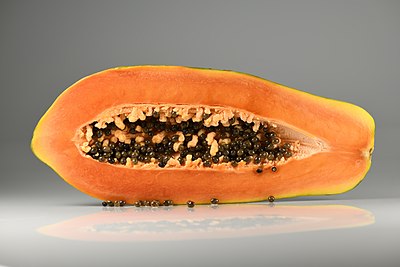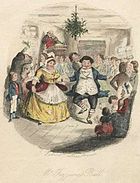Wikipedia:Main Page/Yesterday
From yesterday's featured article
SMS Niobe was a light cruiser of the Gazelle class, built for the Imperial German Navy. Launched in 1899, Niobe was armed with ten 10.5 cm (4.1 in) guns and had a top speed of 21.5 knots (39.8 km/h; 24.7 mph). The ship served as a flotilla leader for torpedo boats, a scout for the fleet, and a station ship with the East Asia Squadron. In World War I, Niobe helped defend Germany's North Sea coast. One of the cruisers permitted Germany by the Treaty of Versailles, Niobe was modernized, but was sold in 1925 to the Kingdom of Serbs, Croats and Slovenes (later Yugoslavia). Renamed Dalmacija the vessel served until April 1941, when she was captured by the Italians. Renamed again as Cattaro, she served until the Italian surrender in September 1943. Seized by the Germans, she was used in the Adriatic Sea until 19 December 1943, when she ran aground on the island of Silba, and was destroyed by British motor torpedo boats. (This article is part of a featured topic: Ships of the Royal Yugoslav Navy.)
Did you know ...
- ... that Yoon Do-young (pictured) scored his debut goal for Daejeon Hana Citizen 50 seconds into a match against Gwangju FC?
- ... that the 2007 Greensburg tornado had ten smaller tornadoes orbiting it?
- ... that a music video for a song on the album Dostrotime was made with an oscilloscope?
- ... that the bacterium Ethanoligenens harbinense can produce hydrogen?
- ... that Bob Hainlen, at the age of 22, was both a player and an assistant coach for a professional American football team?
- ... that Izvestiya Askhabadskogo Soveta was the first Bolshevik newspaper published in present-day Turkmenistan?
- ... that after he did not come home for dinner, James Michael Reardon's assistant priests found that he had died in his basilica while praying?
- ... that the area around Sams Creek was excluded from Kahurangi National Park when it was formed in 1996 due to gold-mining interests?
- ... that Susan Finnegan was the first female head of the arachnids section at the Natural History Museum, London, but had to resign her job to marry?
In the news (For today)

- In France, Dominique Pelicot and 50 other men are convicted of the mass rape of his ex-wife Gisèle Pelicot.
- A 7.3-magnitude earthquake hits Vanuatu's capital, Port Vila, leaving at least 16 people dead.
- President of South Korea Yoon Suk Yeol is impeached (signing pictured) following his declaration of martial law.
- Astro Bot wins Game of the Year at the Game Awards.
On the previous day
- 1828 – Nullification crisis: American vice president John C. Calhoun's South Carolina Exposition and Protest, written to protest the Tariff of Abominations, was presented to the South Carolina House of Representatives.
- 1843 – A Christmas Carol (illustration pictured), a novella by Charles Dickens about the miser Ebenezer Scrooge and his transformation after being visited by ghosts, was published.
- 1983 – The Jules Rimet Trophy, awarded to the winner of the FIFA World Cup, was stolen from the offices of the Brazilian Football Confederation.
- 1997 – SilkAir Flight 185 crashed into the Musi River in Indonesia, killing 104 people.
- 2013 – The European Space Agency's spacecraft Gaia was launched with the goal of constructing the largest and most precise star catalogue ever made.
- Adelaide of Susa (d. 1091)
- Sakakibara Kenkichi (b. 1830)
- Kristina Keneally (b. 1968)
- Ahmet Emin Yalman (d. 1972)
Yesterday's featured picture

|
The papaya (Carica papaya), also known as the pawpaw, is a plant species in the family Caricaceae, and also the name of the plant's fruit. It was first domesticated in Mesoamerica, within modern-day southern Mexico and Central America, and is now grown in several countries in regions with a tropical climate. The papaya fruit is a large berry about 15 to 45 cm (5.9 to 17.7 in) long and 10 to 30 cm (3.9 to 11.8 in) in diameter. The fruit is cultivated for food, being typically consumed when ripe and eaten raw without skin or seeds. The black seeds are also edible and have a sharp, spicy taste. This photograph shows the longitudinal cross section of a papaya fruit lying on its side, with orange flesh and numerous black seeds visible. The picture was focus-stacked from seven separate images. Photograph credit: Ivar Leidus
Recently featured:
|
Other areas of Wikipedia
- Community portal – The central hub for editors, with resources, links, tasks, and announcements.
- Village pump – Forum for discussions about Wikipedia itself, including policies and technical issues.
- Site news – Sources of news about Wikipedia and the broader Wikimedia movement.
- Teahouse – Ask basic questions about using or editing Wikipedia.
- Help desk – Ask questions about using or editing Wikipedia.
- Reference desk – Ask research questions about encyclopedic topics.
- Content portals – A unique way to navigate the encyclopedia.
Wikipedia's sister projects
Wikipedia is written by volunteer editors and hosted by the Wikimedia Foundation, a non-profit organization that also hosts a range of other volunteer projects:
-
Commons
Free media repository -
MediaWiki
Wiki software development -
Meta-Wiki
Wikimedia project coordination -
Wikibooks
Free textbooks and manuals -
Wikidata
Free knowledge base -
Wikinews
Free-content news -
Wikiquote
Collection of quotations -
Wikisource
Free-content library -
Wikispecies
Directory of species -
Wikiversity
Free learning tools -
Wikivoyage
Free travel guide -
Wiktionary
Dictionary and thesaurus
Wikipedia languages
This Wikipedia is written in English. Many other Wikipedias are available; some of the largest are listed below.
-
1,000,000+ articles
-
250,000+ articles
-
50,000+ articles



